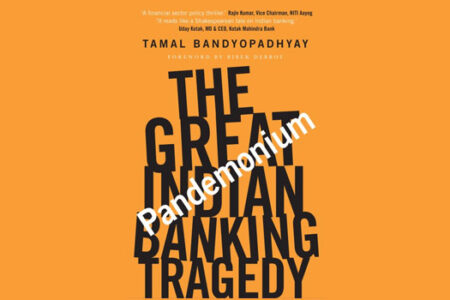Yet again the Reserve Bank of India (RBI) went for an out-of-turn policy rate cut on Friday. Following an off-cycle meeting, earlier slated for June 3-5, of its six-member monetary policy committee (MPC), the central bank cut its policy repo rate by 40 basis points from 4.4 per cent to 4 per cent.
Following this, the reverse repo rate, or the rate at which the banks perk extra liquidity with the RBI, was reduced to 3.35 per cent from 3.75 per cent — both at their historic lows.
One basis point (bps) is a hundredth of a percentage point.
The latest round followed a 75-basis-point policy rate cut in March, out of turn, accompanied by a cut in the banks’ cash reserve ratio, or the portion of deposits that the commercial banks are required to keep with the central bank, and on which they do not earn any interest.
In between, in mid-April, the RBI cut the reverse repo rate by 25 bps to 3.75 per cent.
Since the system is slush with liquidity, and the banks, instead of borrowing from the RBI, are keeping Rs 7-8 trillion and more in the central bank every day, for all practical purposes India’s real effective policy rate is now 3.75 per cent, down from 5.15 per cent in March.
Is there any surprise in the RBI move?
The rate cut per se is not the surprise but going for it less than a fortnight before the scheduled meeting of the MPC is. The central bank seems to be in a tearing hurry to announce the rate cut as it sees the “gravest risks” in the growth outlook.
Since the government announced the Rs 20-trillion package to boost the economy, multiple research houses have been graphically describing how negative growth is staring at the Asia’s third-largest economy in the current financial year. The RBI too is convinced about the bad news as the impact of Covid-19 seems to be far more severe than what was anticipated.
The central bank sees GDP growth in 2020-21 in negative territory with some pick-up in growth impulses in the second quarter.
Once economic activities get restored in a phased manner in the second half of this year, there could be gradual revival but the “downside risks to this assessment are significant”.
While the frontloading of the rate cut, even by a fortnight, illustrates the RBI’s extreme concern about growth, this could be the last cut in the current cycle. The governor’s statement says: “If the inflation trajectory evolves as expected, more space will open up to address the risks to growth.” Clearly, at the moment, there is no space of any more rate cut.
The MPC feels that headline inflation may remain firm in the first half of 2020-21 but should ease in the second half, aided by favourable base effects. By the second half of the year, it is expected to fall below the target. For now, the MPC sees the risks to inflation short-lived.
Lack of data makes inflation projection impossible at the moment but even in March the RBI had not spelt out the inflation (and growth) estimates. The policy had just reiterated its objective of achieving the medium-term target for the consumer price index rate of 4 per cent within a band of +/- 2 per cent, while supporting growth. Incidentally, the US Federal Reserve too has refrained from fixing any target for inflation.
The biggest challenge before the banking regulator at the moment is how to make the banks lend as none of them seems to have the appetite for credit risks even as the law of diminishing marginal utility is fast catching up with the rate cuts.
The equity market gave a thumbs-down to the rate cut and its impact on the government bond market was marginal. That was, however, expected as there were four bond auctions on Friday for raising Rs 30,000 crore. In addition to that, each auction had a Rs 2,000-crore greenshoe option, which the RBI exercised. With so much supply of fresh papers, one could not expect a rally in the bond market.
The banks are buying government bonds but their appetite for corporate paper is still lukewarm. Big corporate houses and triple-A-rated papers have started getting the benefit of rate cuts and the liquidity sugar rush but most borrowers are still pariahs for the Indian banking system. For them, the cost of borrowing has not come down; and they do not have access to bank credit.
The rise in the banks’ exposure limit to a corporate group from the current level of 25 per cent to 30 per cent of a bank’s net-owned funds or capital and free reserves will help credit growth but credit will not flow to all.
Beyond the rate cut, the policy document has half a dozen measures to improve the functioning of the markets, support export and import, ensure smooth borrowing by state governments, and help fighting the stress of borrowers. The moratorium on loan repayments has been extended by three more months and the lenders are being allowed to convert the accumulated interest on working capital facilities during the six-month moratorium into term loans, to be repaid by March 2021.
All these could have been done in the first week of June but the rate cut could not wait when the growth scenario is bleak.
Though the RBI will find it difficult to go for another round of rate cut too soon, that does not mean that it has fired all the bullets. In due course, we may see the central bank buying government bonds directly to ease the pressure on the market or take even bolder moves to revive the economy and preserve financial stability.
This statement says it all: “The RBI will continue to remain vigilant and in battle readiness to use all its instruments and even fashion new ones, as the recent experience has demonstrated, to address the dynamics of the unknown future.”



